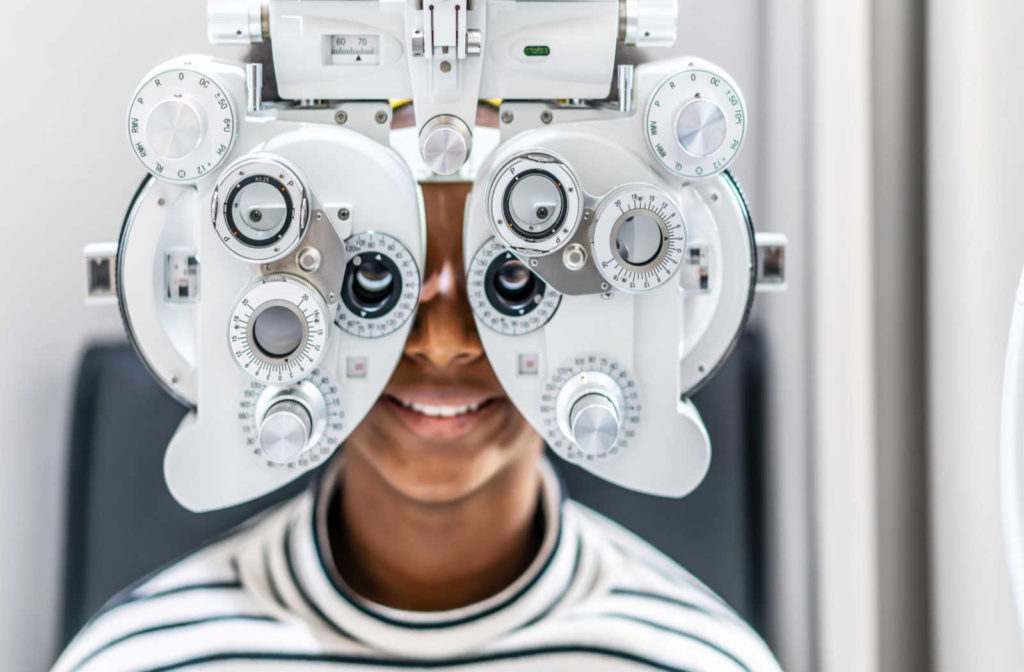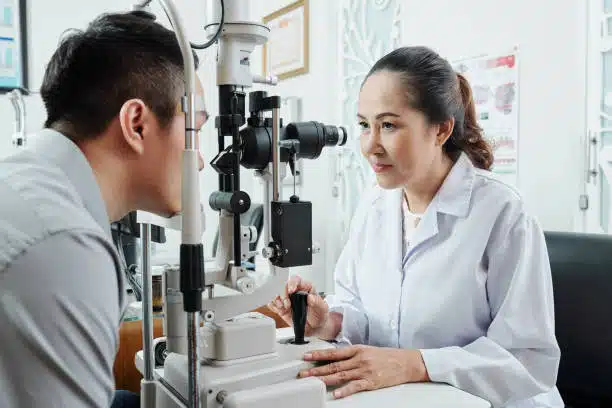Checking Out the Newest Technological Developments in Optometry and What They Mean for Eye Doctors
From the precision of Optical Coherence Tomography to the nuanced understandings supplied by AI-driven diagnostic tools, these advancements are establishing new requirements in individual analysis and therapy. As these advancements permeate the method, eye doctors are encountered with the obstacle of embracing these tools to enhance client results.
Advancements in Diagnostic Devices
Advancing the area of optometry, technologies in analysis tools have actually reinvented the method eye care specialists examine and identify visual problems and ocular conditions. The past years has seen substantial technical developments, making it possible for even more accurate and thorough assessments.
One more trick development is the intro of advanced corneal topography systems, which map the surface curvature of the cornea with accuracy. These tools are specifically helpful for fitting get in touch with lenses and detecting corneal disorders. Digital retinal imaging has transformed standard ophthalmoscopy, using thorough, panoramic views of the retina that help with complete aesthetic exams.
The development of wavefront aberrometry has also been important, allowing the evaluation of refractive mistakes with unequaled precision (Eye Doctor Optometrist). This technology assists in customizing corrective lenses and improving surgical end results for refractive surgeries. Collectively, these diagnostic developments empower optometrists to supply premium person treatment, making certain very early treatment and tailored treatment approaches, inevitably improving aesthetic wellness results
AI in Individual Administration
Building on the structure of cutting-edge analysis tools, the consolidation of artificial knowledge (AI) in person management stands for a transformative leap for optometry. AI systems are significantly employed to improve performance, accuracy, and personalization in client care.
In addition, AI-driven platforms promote structured patient interactions and administrative processes. Automated organizing, online appointments, and individualized follow-up plans not just boost person fulfillment but likewise maximize time monitoring for specialists. These systems can triage people based on the urgency of their problems, making certain that those in crucial requirement obtain prompt attention.
Moreover, AI boosts decision-making by providing optometrists with evidence-based recommendations and treatment paths. By incorporating information from digital health documents, AI devices supply insights that inform professional decisions, decreasing the danger of mistakes and enhancing person end results. As AI remains to evolve, its role in client administration will likely broaden, reshaping the landscape of optometric care.
Advancements in Retinal Imaging
In the world of optometry, retinal imaging has witnessed impressive technical developments that are enhancing analysis capabilities and patient treatment. Developments such as Optical Comprehensibility Tomography (OCT) and fundus digital photography have changed exactly how optometrists assess the retina and envision.
Improved imaging methods like OCT angiography are additional refining analysis precision. This non-invasive strategy maps blood flow in the retina, supplying important insights right into vascular health without the demand for dye shots. Additionally, adaptive optics modern technology is being integrated right into retinal imaging systems to fix eye aberrations, delivering unmatched picture quality. Such improvements facilitate the identification of min retinal modifications that can signify illness development.
In addition, advancements in man-made my link knowledge are boosting retinal imaging by enabling automatic evaluation of huge datasets. These systems assist optometrists in determining patterns a sign of pathology, therefore enhancing diagnostic accuracy and effectiveness. Jointly, these technologies are changing retinal imaging right into a cornerstone of modern eye care, enhancing results and broadening restorative opportunities.
Teleoptometry's Expanding Function
Teleoptometry is significantly ending up being an important component of eye treatment, driven by improvements in digital interaction and analysis tools. This is specifically helpful in rural and underserved locations where access to discover this specialized eye treatment is typically limited.
The assimilation of expert system (AI) more enhances teleoptometry, making it possible for the analysis of aesthetic information and aiding in the discovery of ocular problems such as glaucoma and diabetic retinopathy. AI-powered formulas can rapidly interpret complicated imaging data, giving optometrists with valuable understandings that reinforce clinical decision-making.
Additionally, teleoptometry supports continuity of treatment through smooth integration with electronic wellness records (EHRs), permitting eye doctors to preserve detailed individual backgrounds. When seeking advice from with various practitioners., this makes sure that people receive tailored and consistent care even.
In spite of these benefits, obstacles continue to be, including guaranteeing data protection and taking care of client expectations. Teleoptometry stands for a substantial stride in the direction of even more obtainable, efficient, and patient-centered eye treatment. As modern technology evolves, its role is poised to expand further.

Future Patterns in Eye Care
A myriad of innovative trends is established to improve the future of eye treatment, driven by technical developments and the developing requirements of clients. One significant trend is the assimilation of expert system (AI) in diagnostics, which assures to boost the accuracy and effectiveness of eye evaluations. AI algorithms can assess substantial amounts of data from retinal images, potentially detecting problems like diabetic retinopathy and glaucoma earlier than traditional approaches.
Additionally, individualized medicine is obtaining traction in optometry, with hereditary screening informing tailored treatment strategies. This technique aims to maximize client outcomes by customizing interventions to specific genetic accounts. Wearable technology, such as clever get in touch with lenses, is also on the perspective, providing real-time surveillance of intraocular pressure or sugar levels, hence offering continual insights right into ocular and systemic health.
The fostering of augmented truth (AR) and virtual truth (VIRTUAL REALITY) in training and client education and learning is another arising trend. These innovations supply immersive experiences that can enhance understanding and abilities both for eye doctors and clients. As these patterns advance, optometrists have to stay abreast of technological advancements to give innovative treatment, ensuring enhanced individual outcomes and contentment in the dynamic landscape of eye care.
Final Thought

Collectively, these diagnostic improvements encourage eye doctors to deliver remarkable client care, making certain very early intervention and customized treatment strategies, inevitably improving aesthetic health and wellness outcomes.

As these innovations proceed to evolve, optometrists need to adjust and incorporate them into method, eventually enhancing operations efficiency and raising the requirement of eye treatment supplied to people.